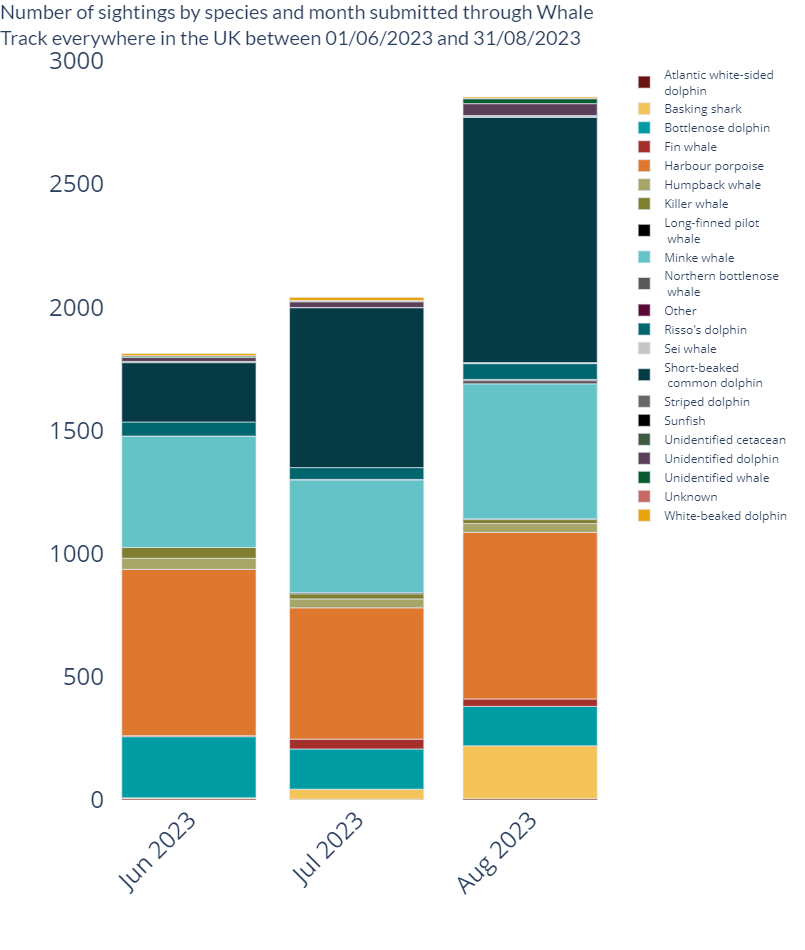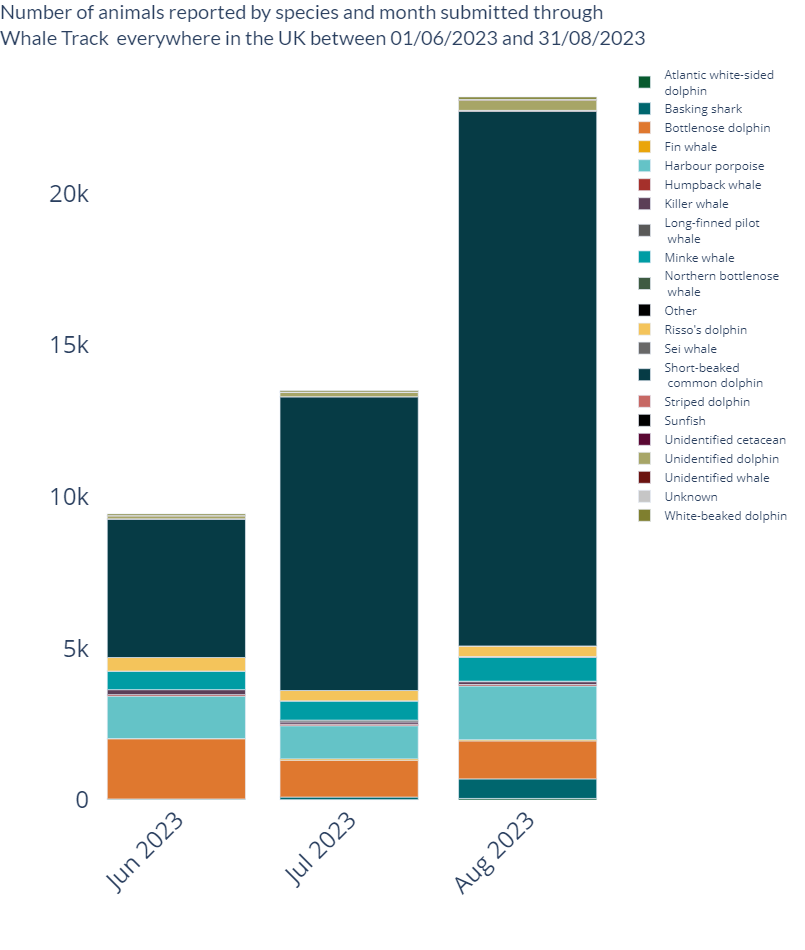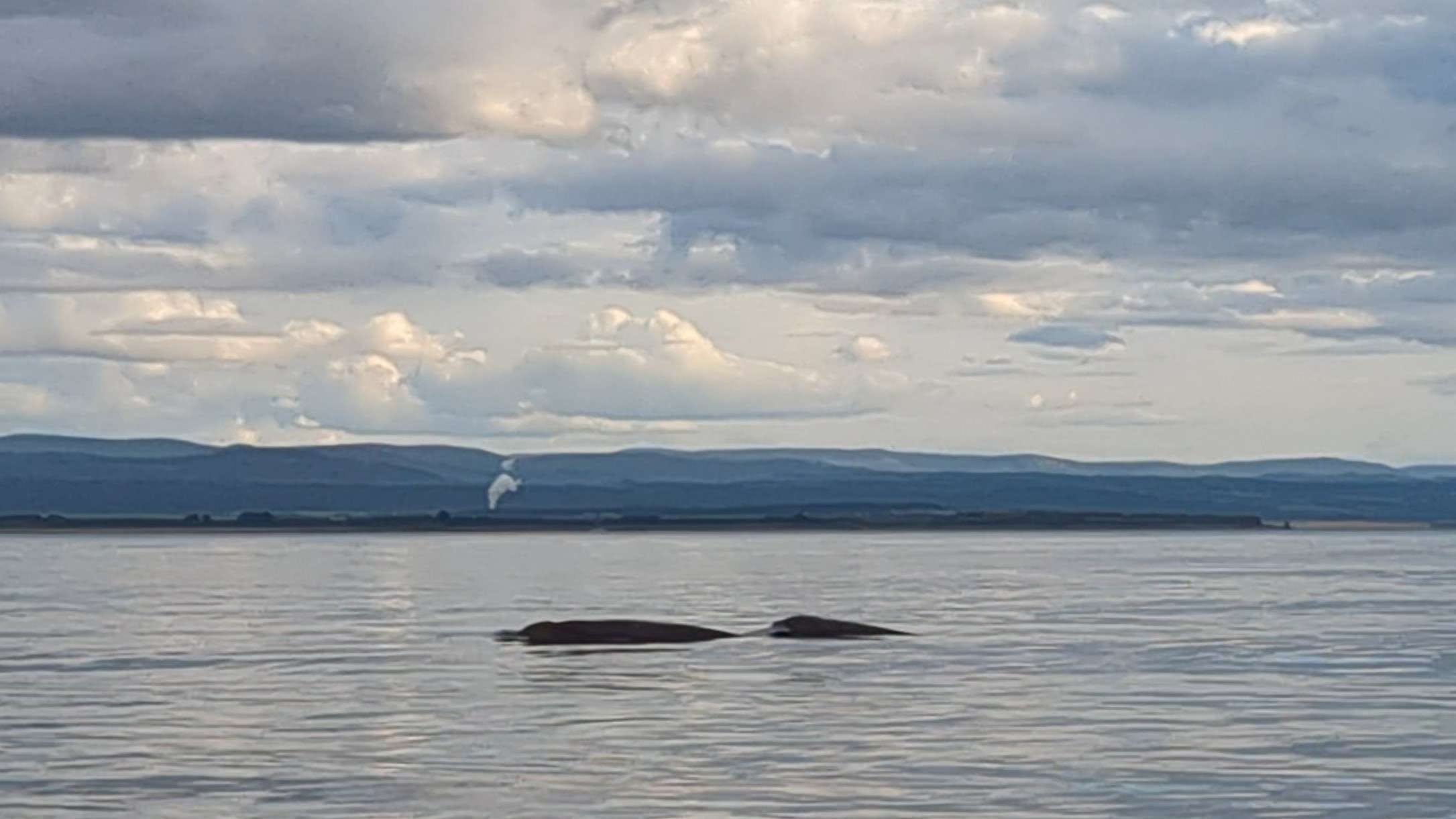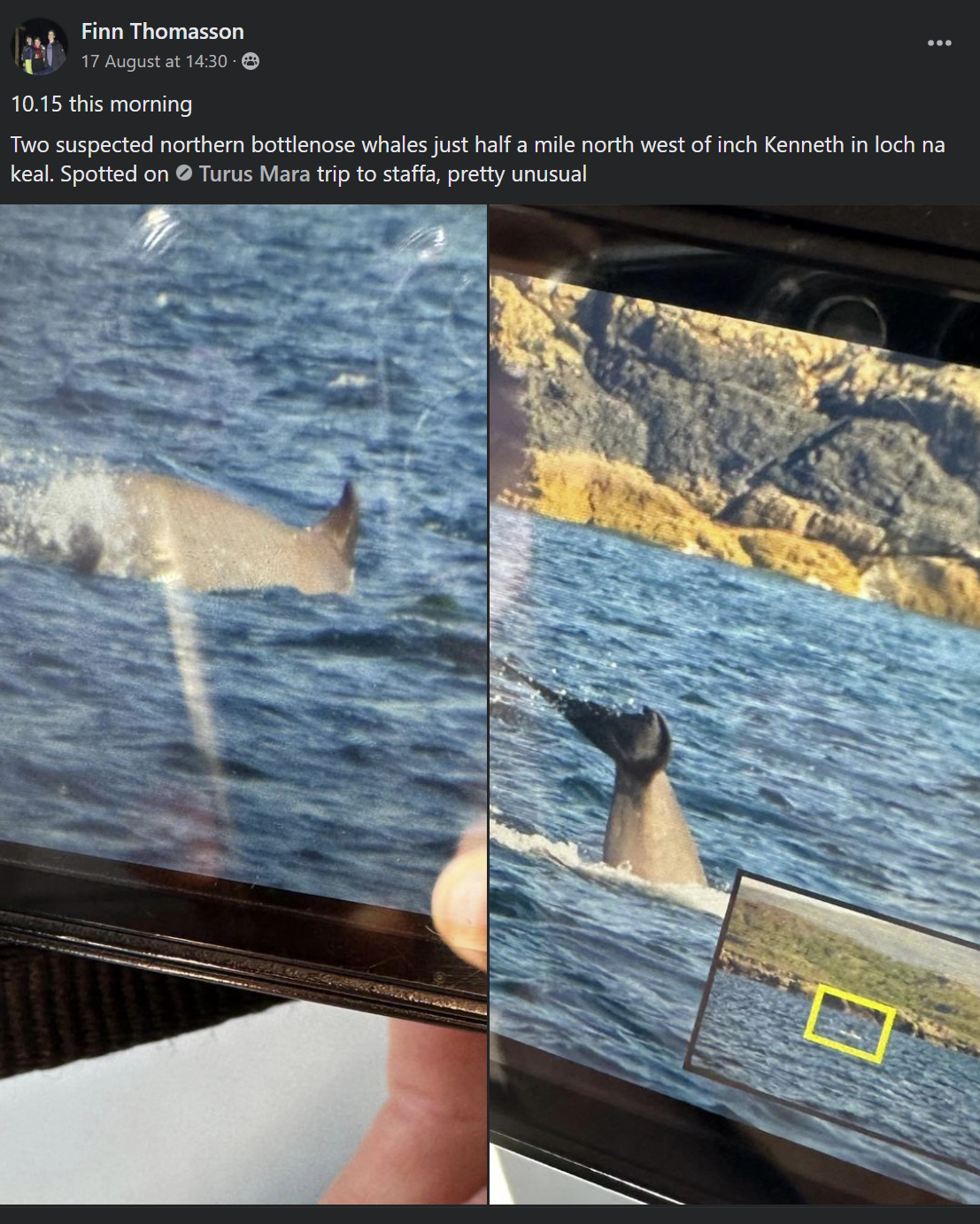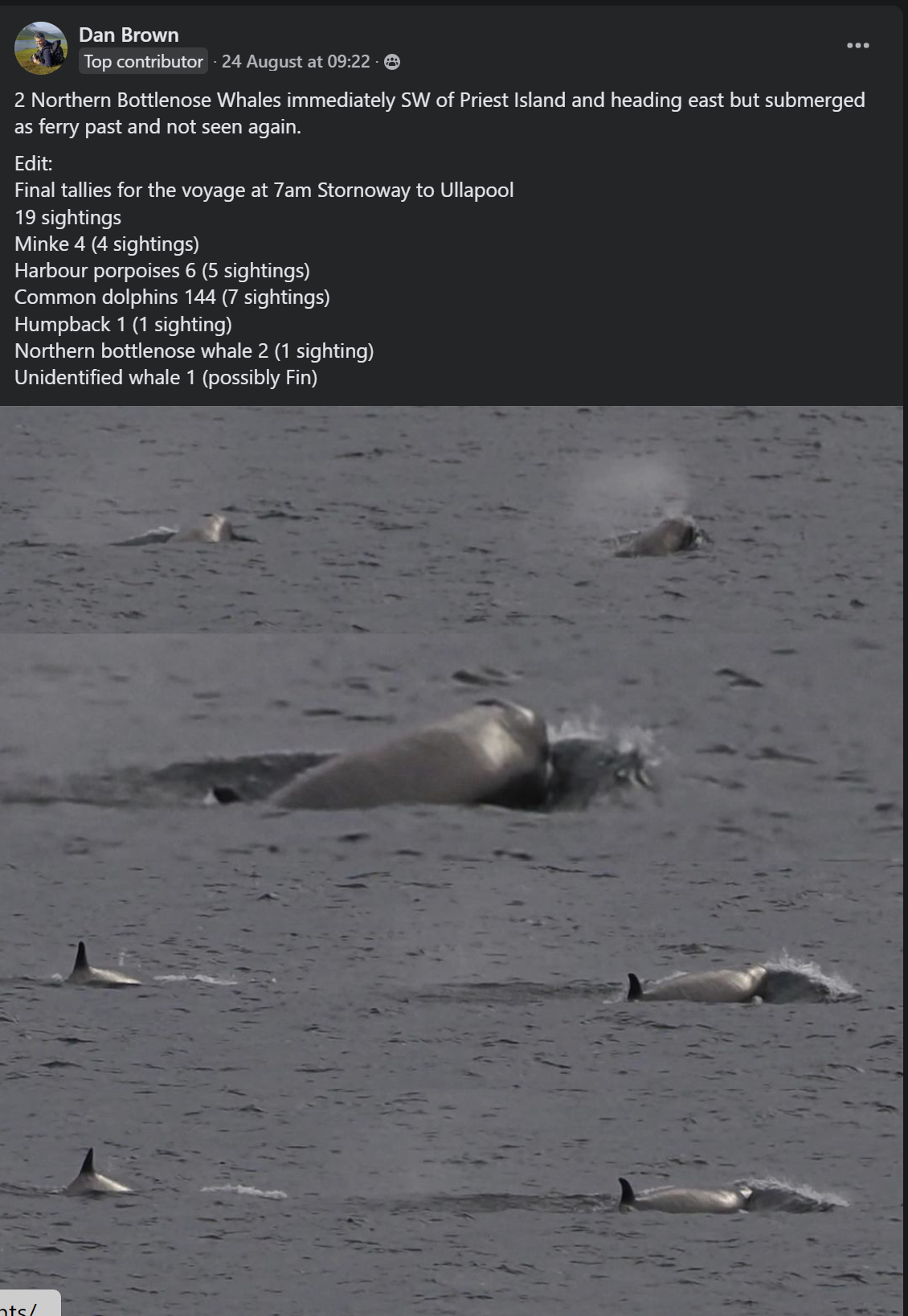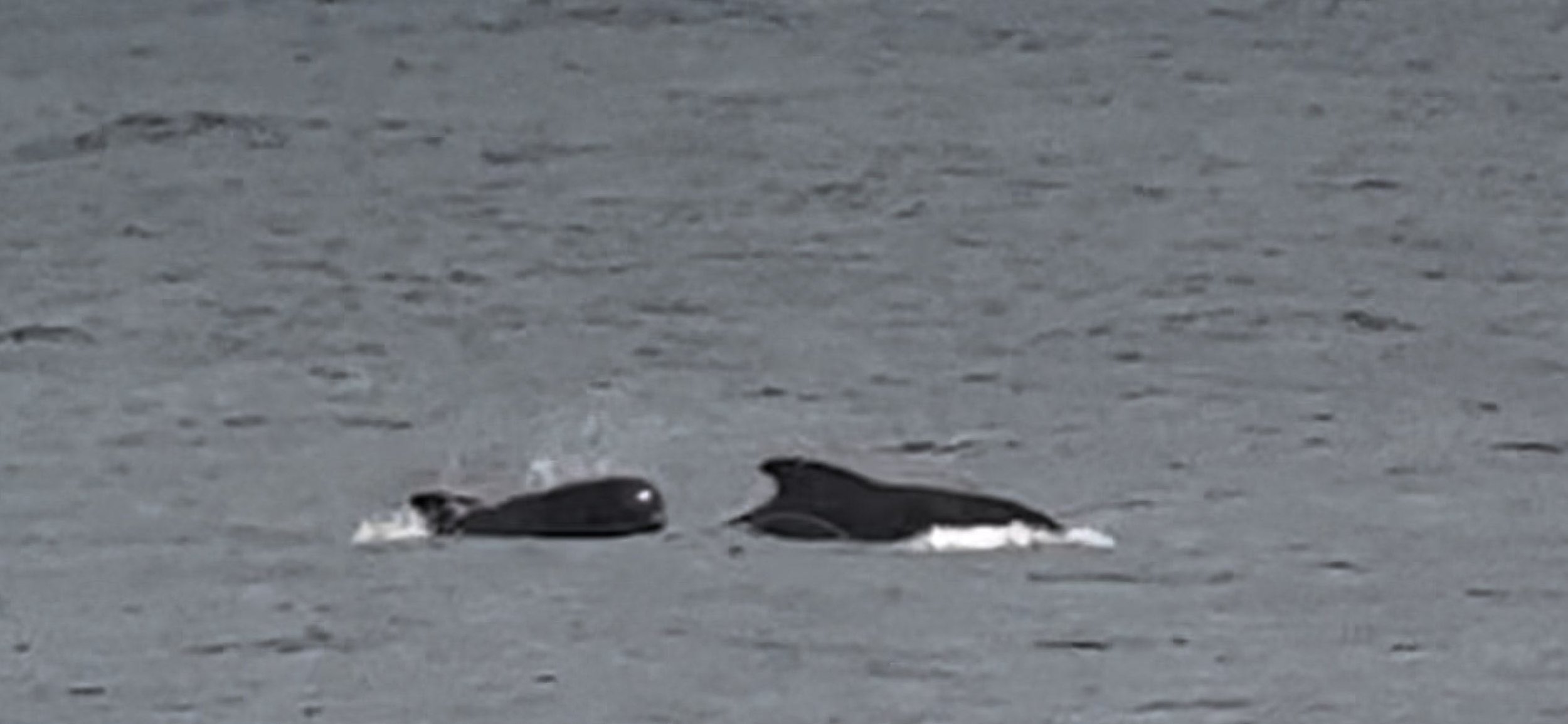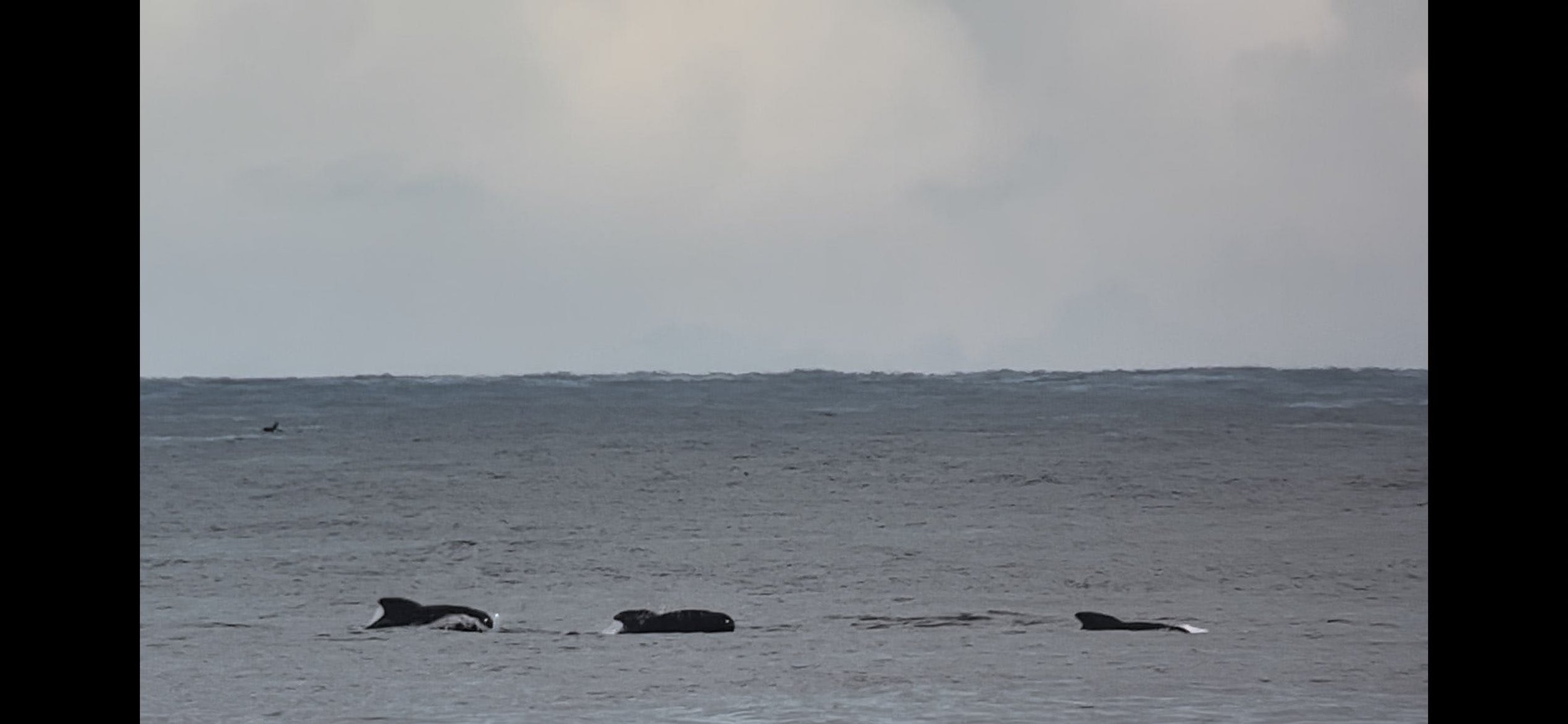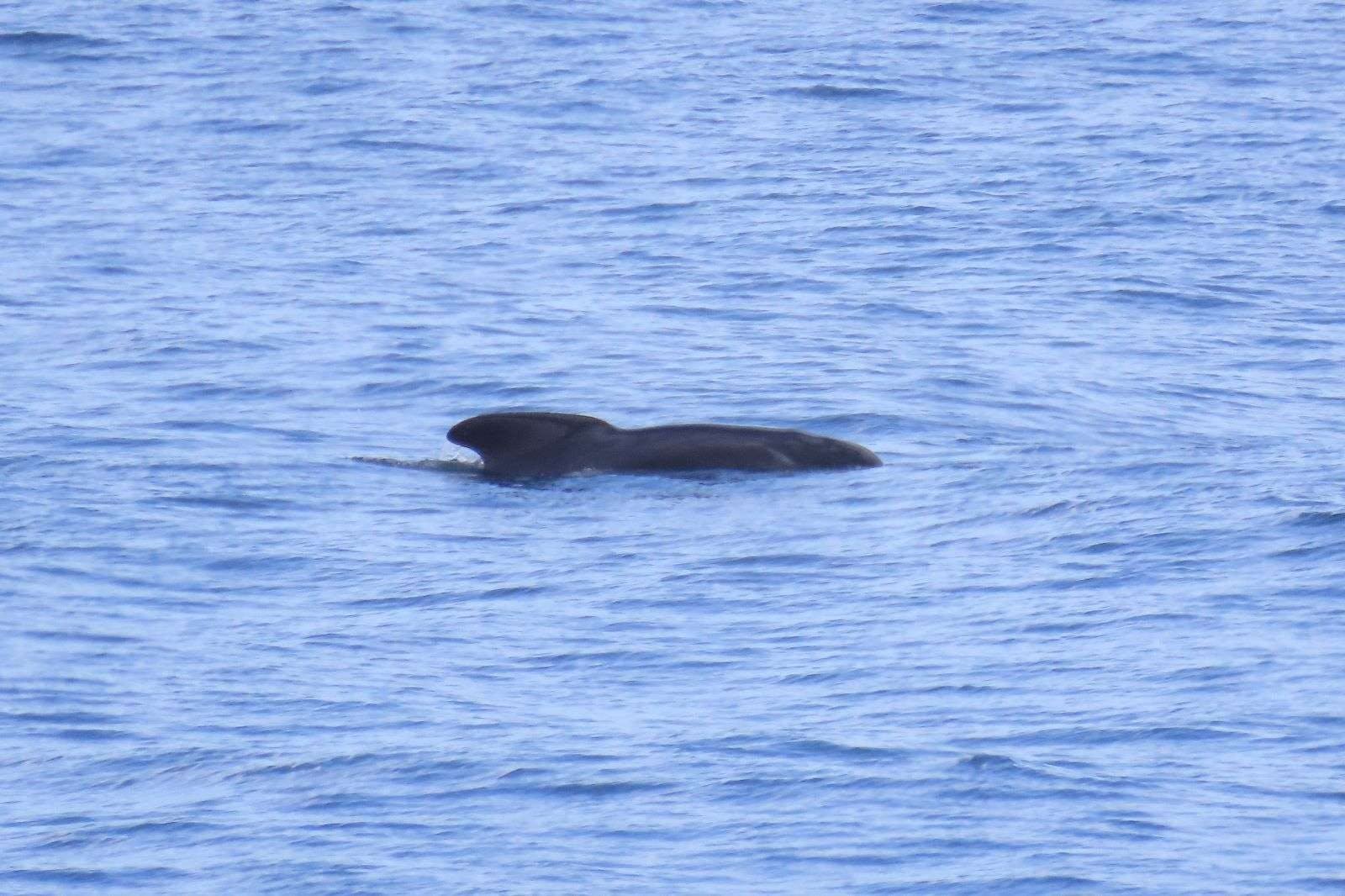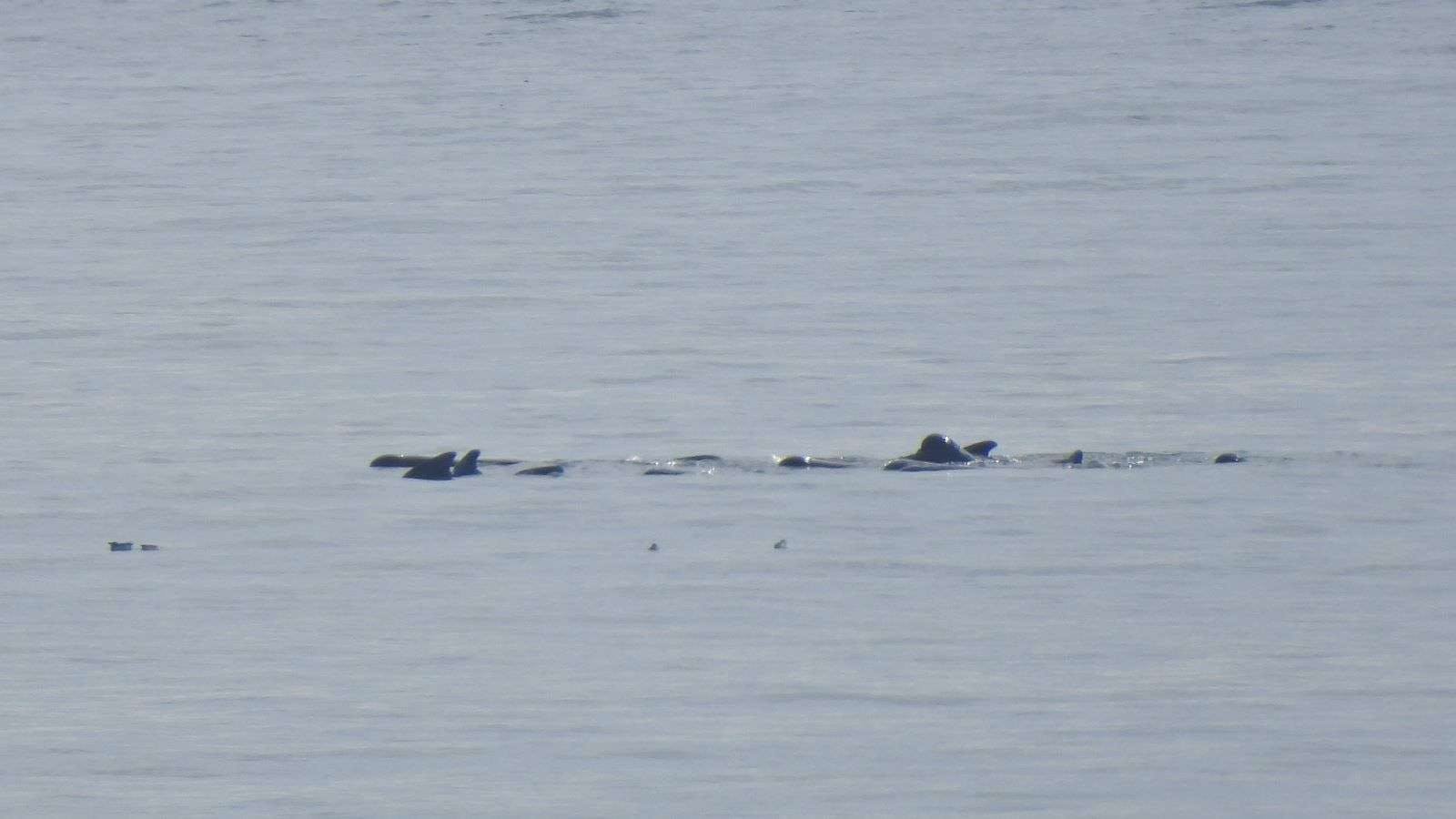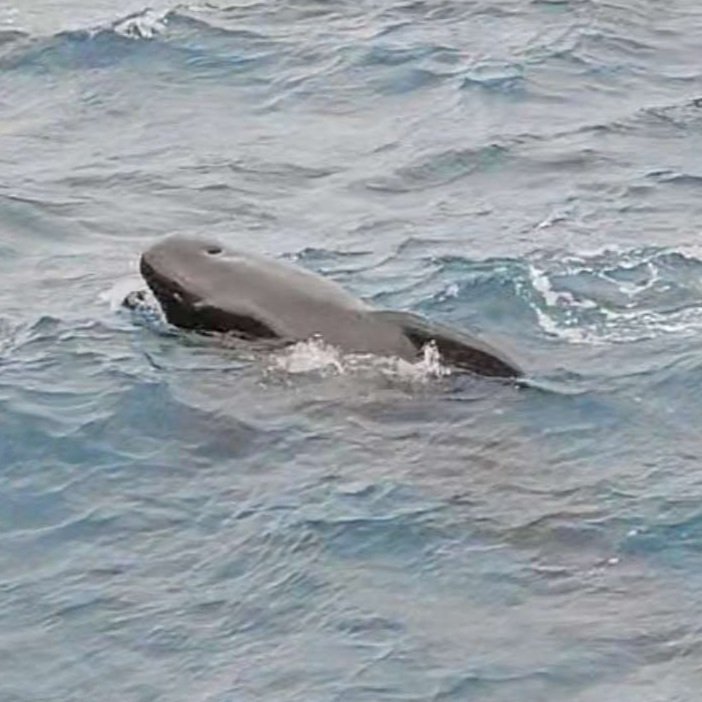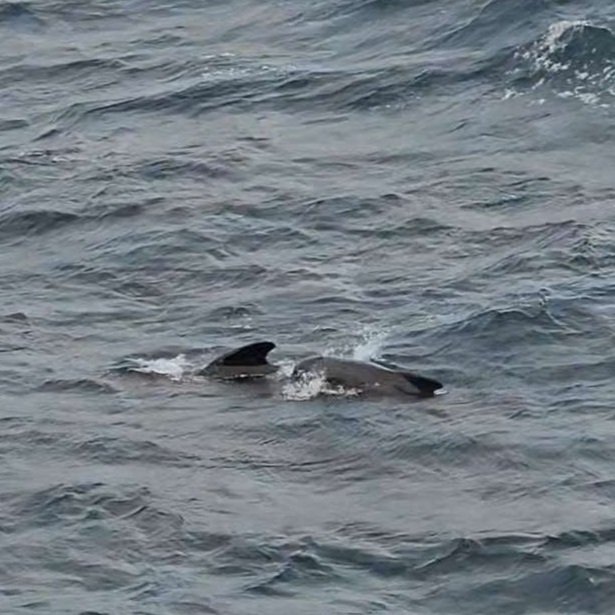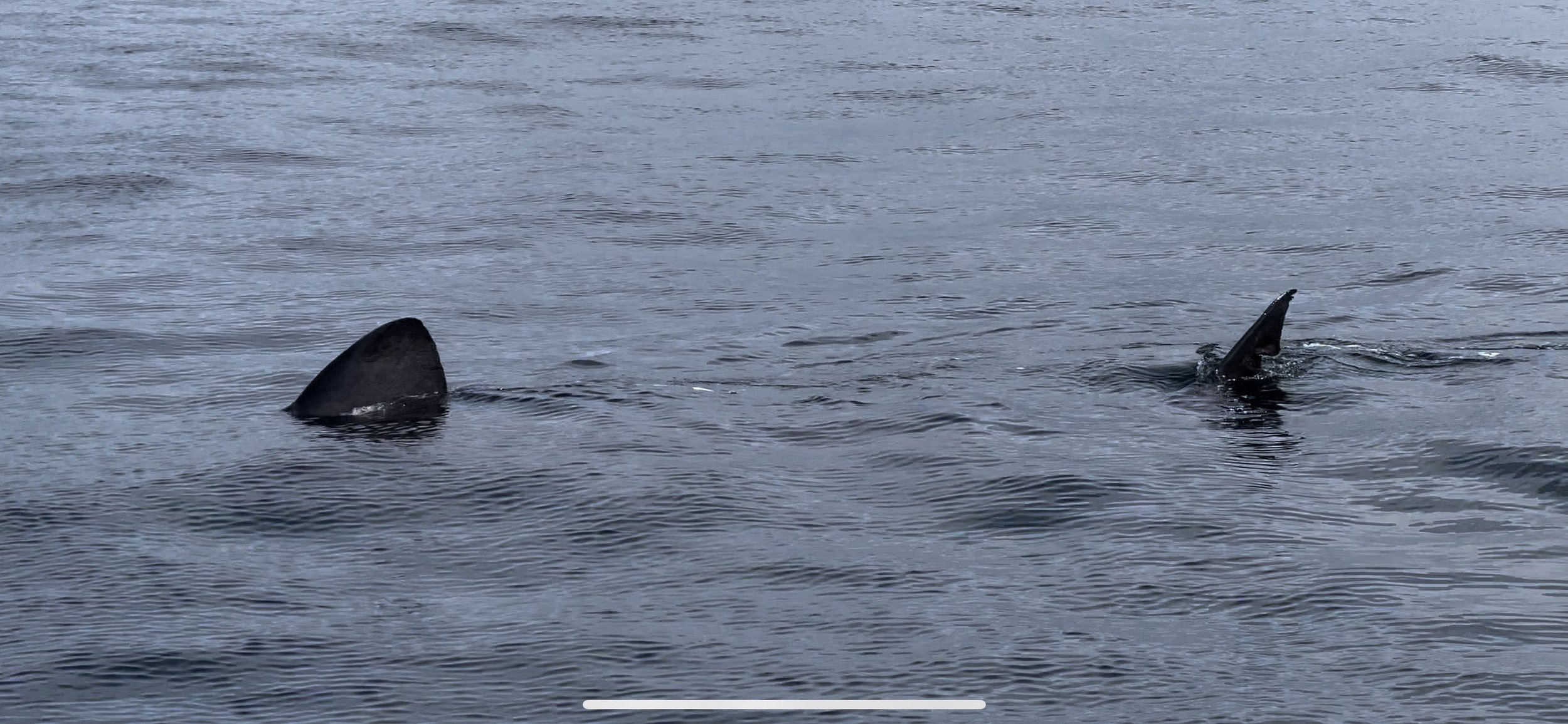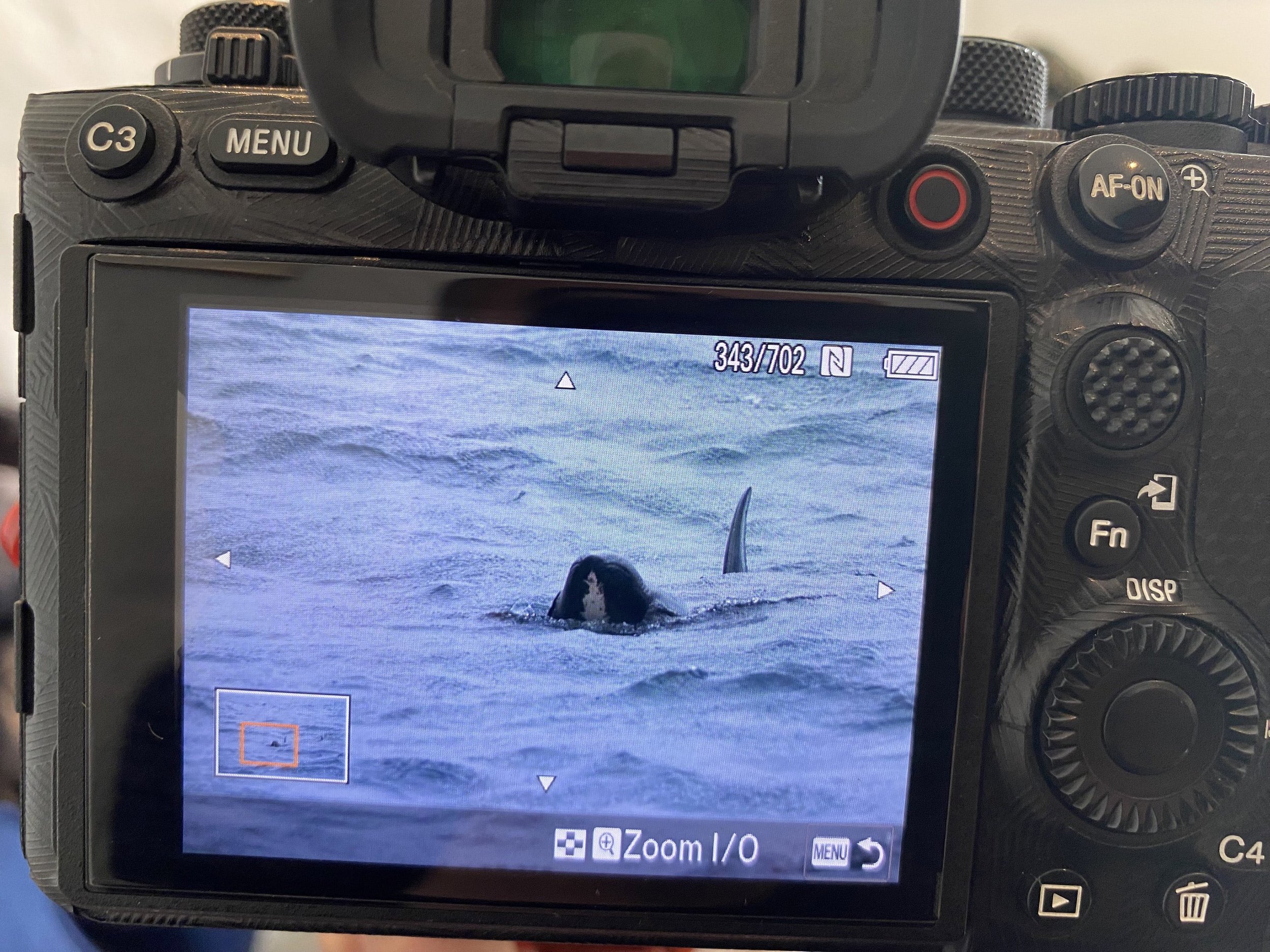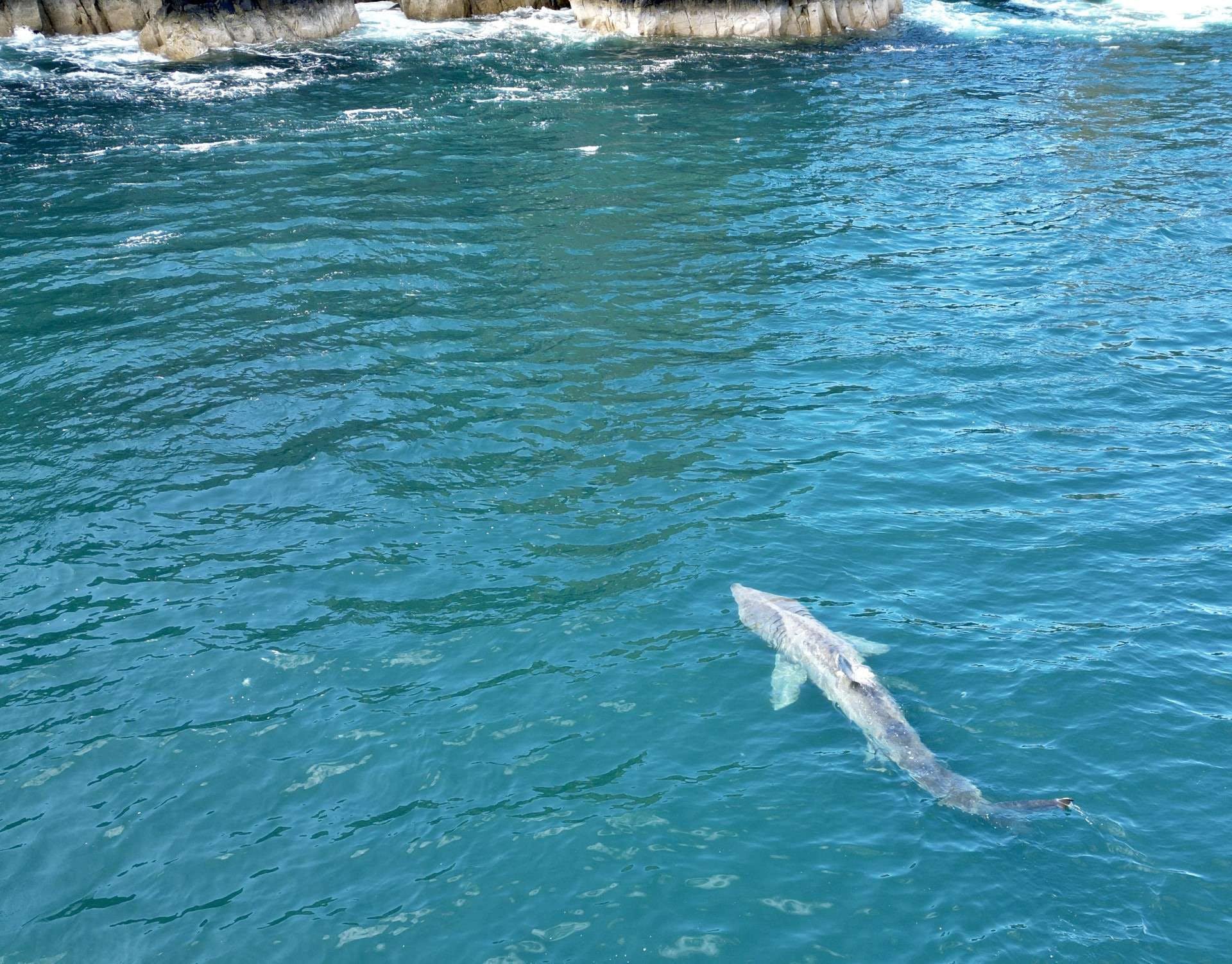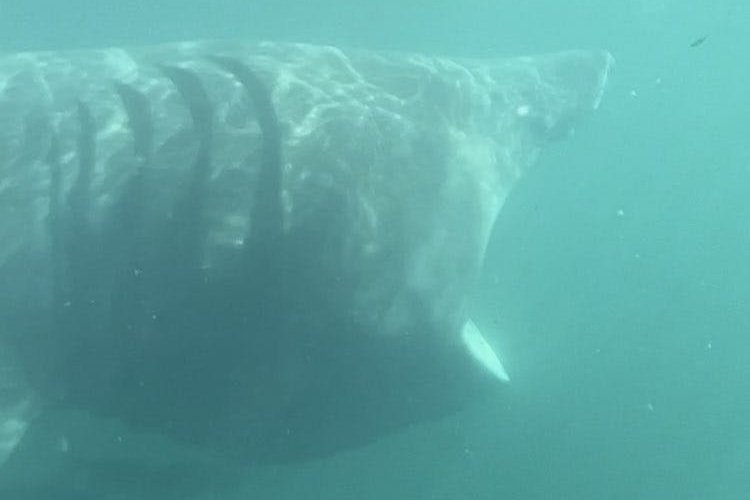A Summer of Superb Sightings: Whale Track Summary
Basking shark off the Isle of Skye, ©Anthony Rigell
As autumn takes root in the hebrides, we look back at the incredible number of sighting reports that our dedicated Whale Track community submitted over the summer months.
An amazing 61% increase in the number of people reporting what they’ve spotted through Whale Track has been recorded this summer compared to last year. More than double the number of land-based watches have been undertaken and almost double the number of sightings with photographs - so important to validate the sightings and undertake Photo-ID analysis.
A total of 6,726 reports through Whale Track of 46,186 animals from a staggering 16 different species over the summer months alone!
We’ll start by looking at our podium for the summer season. Between the start of June and end of August this year, bottlenose dolphins have slipped down to 4th most sighted species, with the wonderful minke whales continuing to claim 3rd place (1,461 sightings of 2,021 animals), while our top two most sighted species have the slimmest gap imaginable - only 1 sighting in it! But, the common dolphins have reclaimed their top spot for the first time since last autumn (1,887 sightings of 31,879 animals) and the ,harbour porpoise takes second place (1,886 sightings of 4,270 animals) making our top three most sighted species this summer, the same as last summer.
*This data has not been analysed or corrected for effort.
NORTHERN BOTTLENOSE WHALE
Following similar stats to summer 2022, 14 sightings of northern bottlenose whales were reported through Whale Track, with reports submitted during excursions at sea, watches from land and casual sightings. We have tracked these reports (including some on social media) to build a timeline of the species occurence.
©Zoltan Around the Globe
21 July: First sighting of 3 northern bottlenose whales seen around Cromarty, Inverness, sent in by Zoltan Around the Globe
07 August: Rosie reports 2 northern bottlenose whales seen around the Isle of Raasay
08 August: Stuart Dewar reports 1 northern bottlenose in the same area.
09 August: Two reports by Paul Thornely and Stuart Dewar of 1 northern bottlenose whale at Broadford, Isle of Skye.
10 August: Katie Tunn reports on social media, that 1 northern bottlenose whale has been found stranded near Broadford Bay. On the same day, Hebridean Whale Cruises report seeing 3 northern bottlenose whales off the east side of the Isle of Lewis.
17 August: Finn Thomasson, from Turus Mara, spots 2 northern bottlenose whales around the entrance to Loch Na Keal, Isle of Mull.
21 August: Hebridean Adventures report 3 northern bottlenose whales in Loch Sunart, which is confirmed by Peter Selway sharing photos on local Facebook group, Hebrides and NW Scotland Cetacean sightings.
22 August: Hebridean Adventures report 1 individual around north end of the Isle of Mull, which is followed up by Jimmy Hall reporting the same sighting.
23 August: Millz_SB reports 2 northern bottlenose breaching closer to the Isle of Coll.
24 August: Wild Discovery see 2 individuals just outside Ullapool between 9-11am. While our seasonal volunteer, May, records 2 individuals during a headland watch at Glengorm, the whale was spotted off the Ardnamurchan coast at 11:30am - see video below!
27 August: David Nicol report on social media of 1 individual found in Kyle of Lochalsh, which could potentially have been the one washed ashore in Broadford a couple weeks prior.
Since 27 August, we have had reports of 1 northern bottlenose whale being seen between Loch Spelve and Kerrera between 8-13 September. BDMLR have been informed and everyone is working together to keep track of this animal.
“We were just about ready to leave when I spotted a massive splash. At first I thought it was a breaching minke whale but was delighted to realise it was a northern bottlenose whale - a first (beaked whale) for me!”
PILOT WHALE
Long finned pilot whales are a species that we monitor carefully when reported, alongside our friends at BDMLR and SMASS - being close to shore can be an indication that they may strand. A highly social species which is prone to mass stranding, pilot whales can be seen in pods of 20 to over 1,000 individuals. Unfortunately, this summer saw 55 pilot whales stranding on the Isle of Lewis on 16 July. The British Divers Marine Life Rescue attended, administering first aid to the surviving whales in the hopes of saving as many as possible. Sadly, none of the whales survived in what would have been a very traumatic stranding for those volunteers in attendance. You can read the full account on BDMLR’s website.
A couple weeks later, on 30 July, another report of pilot whales came through. Regular reporter, Liam Pritchard, along with David Bevan, spotted a pod of at least 20 individuals off the Aberdeen coast. Thankfully, it appears this pod may have found their way back to deeper waters and have not been reported since.
©David Bevan
©Liam Pritchard
It’s wonderful to receive sighting reports from offshore waters through Whale Track, as an area not frequented by many, it’s a fascinating snap shot into the species we find further out to sea. Thank you to Donald Morrison, who reported of a pod of 9 pilot whales swimming and associating with the boat.
©Donald Morrison
BASKING SHARK
This summer has seen an impressive 260 reports of basking sharks across Scotland, with sightings coming in from off the west coast, the east coast and Shetland.
Tanya Gray conducted a watch from land in Shetland on 19 August and spotted a lone basking shark feeding close to shore.
“Seen for the entirety of the watch. Watch only ended due to sudden change in weather and deterioration of visibility due to rain.”
Fergus Reade, from Turus Mara and Karl Wild, saw basking sharks feeding around Mull, capturing these stunning images.
©Fergus Reade
©Karl Wild
Anthony Rigell reported seeing this beautiful basking shark off the north coast of Skye, meanwhile Hannah Mcvicar had this incredible encounter with a group of 5 basking sharks while out kayaking. Find out more about Hannah’s experience in our upcoming Whale Track newsletter - sent to everyone who has downloaded Whale Track and submits sightings.
©Basking shark drone image supplied to Anthony Rigell
©Hannah Mcvicar
Over in the Moray Firth, residents were treated to an incredible number of basking sharks congregating off the coast at Nairn. Minimum estimates of at least 40 animals were reported through Whale Track, with more reports on the local Caithness and Moray Firth Cetacean Sightings page. We encourage everyone who sees these amazing animals to report them through Whale Track and share your images so we have record of this rare event.
The reports we have seen, indicate these animals are in the area feeding, as well as showing nose to tail behaviours - believed to be connected to courtship. With so many of these gentle giants in the area, it is very important for locals and visitors, hoping to get a look at them, to keep a safe and respectful distance, following the Scottish Marine Wildlife Watching Code.


